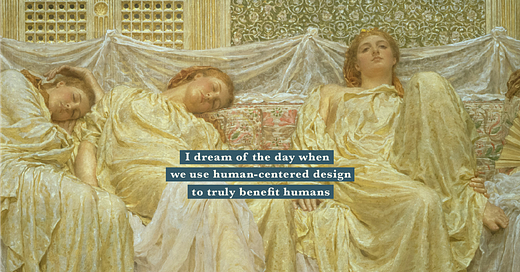What is Human-Centered Design and Why it Matters at Home
Discover how the same principles that drive innovation at work, like empathy, problem-solving, and collaboration, can help families thrive.
Human-Centered Design is a creative approach to solving problems by starting with people, understanding their needs, behaviours, and the context that surrounds them to design solutions that fit. Designers use this approach to build apps, services, or systems. We map customer journeys, test ideas, gather feedback, and align design to business goals. We make changes to the system to support the solution, to create conditions that enable the success of the solution.
At home, we value strong relationships and connection. But often depend on guesswork, instincts, or inherited parenting habits, without being fully intentional about the environment that we are creating. What if we learn to pause and to better understand each member of our family, reflect on our current environment, and focus on creating the support needed for each diverse individual to be the best version of themselves?
This is where I see the opportunity to educate parents about human-centered design and how they can apply it at home, so family life feels more collaborative and less like a battleground of stress and resistance.
The Human-Centered Approach: The Double Diamond (Adapted for Home)
The Double Diamond is a widely-used design framework that guides people from problem to solution through four phases: Discover, Define, Develop, and Deliver (or Test & Iterate). It encourages teams to explore ideas broadly before narrowing in on what really works.
Some of the core principles that make the Double Diamond effective also make it valuable for families:
Divergent thinking creates space for creativity and multiple perspectives.
Research and observation ensure we’re solving the right problem, not just the loudest one.
Iteration reminds us that no solution has to be perfect the first time—we can improve as we go.
Collaboration brings in different voices, helping the solution work for everyone involved.
This visual breaks down the four phases of the Double Diamond across professional and family settings. It shows how each phase translates between work and home, and includes a relatable example of how this approach can help solve a common challenge at home like “child refusing to study.”
In professional settings, it's common to move between the two phases within a diamond before moving to the next. At home, that flexibility matters even more. Often, we don’t know the exact cause of a problem because family life is complex, and many factors can be at play. And that’s okay. Just like with ourselves, sometimes it’s enough to pause, name what we’re noticing, and explore the next step forward together. Having a shared family strategy helps you keep moving without feeling stuck, and offers a more objective guide for decision-making. The process itself creates space for learning, empathy, and growth.
Over time, as this approach becomes part of your family culture, resolving challenges starts to feel more natural and less reactive. The key is understanding the process, knowing where you are within it, and using it flexibly depending on the situation. If you're working on a bigger shared family strategy, you might move intentionally through each phase, taking time to reflect before committing to a plan. For smaller, everyday challenges, you can still run through the entire process in a quick 15-minute conversation. The power is in the adaptability.
Why This Matters More Than Ever
Designing at home builds a culture of intentionality. It gives everyone not just the adults, a voice in shaping the family experience. Co-creation doesn’t mean children get to make every decision. Of course, when it's appropriate and age-appropriate, they should be encouraged to decide. But more importantly, co-creation means giving them a voice, letting them be heard, and helping them see they can be active contributors to how the family works together.
Research in child development and psychology indicates that involving children in collaborative problem-solving at home can foster emotional intelligence, resilience, and social skills. Engaging children in discussions about challenges and solutions helps them develop critical thinking and emotional regulation abilities. Meanwhile, studies in organizational psychology show that environments built on psychological safety where people feel seen and heard perform better across the board.
What this can look like at home:
Everyone feels safe to express emotions without judgment.
Families build a sense of camaraderie knowing they’re supported even when struggling.
The process encourages objectivity, helping adults become more self-aware and reflective. It invites shared ownership of behaviour and choices.
Kids are included in decision-making in ways that are age-appropriate. They learn that fairness isn’t arbitrary, it’s intentional, and shaped with empathy.
Co-regulation, where children begin to learn emotional balance through repeated experiences of being soothed and supported by calm, reflective adults.
Flexibility grows as the family recognizes that every child develops differently and needs different types of support.
And the best part? These are the same skills we celebrate in high-performing teams at work. And the very ones we need to thrive in a rapidly changing world. The more we design intentionally at home, the more natural it becomes to practice the skills that truly matter, in both our professional and personal lives.
At work, we build solutions for people we don’t personally know. At home, we have the privilege of building solutions with the people we love and care most about.
Subscribe to Stoodio for Families and follow along as we explore how design principles, mindsets, and methods created to help you think and work like a designer can help you shape your family, one small step at a time.





